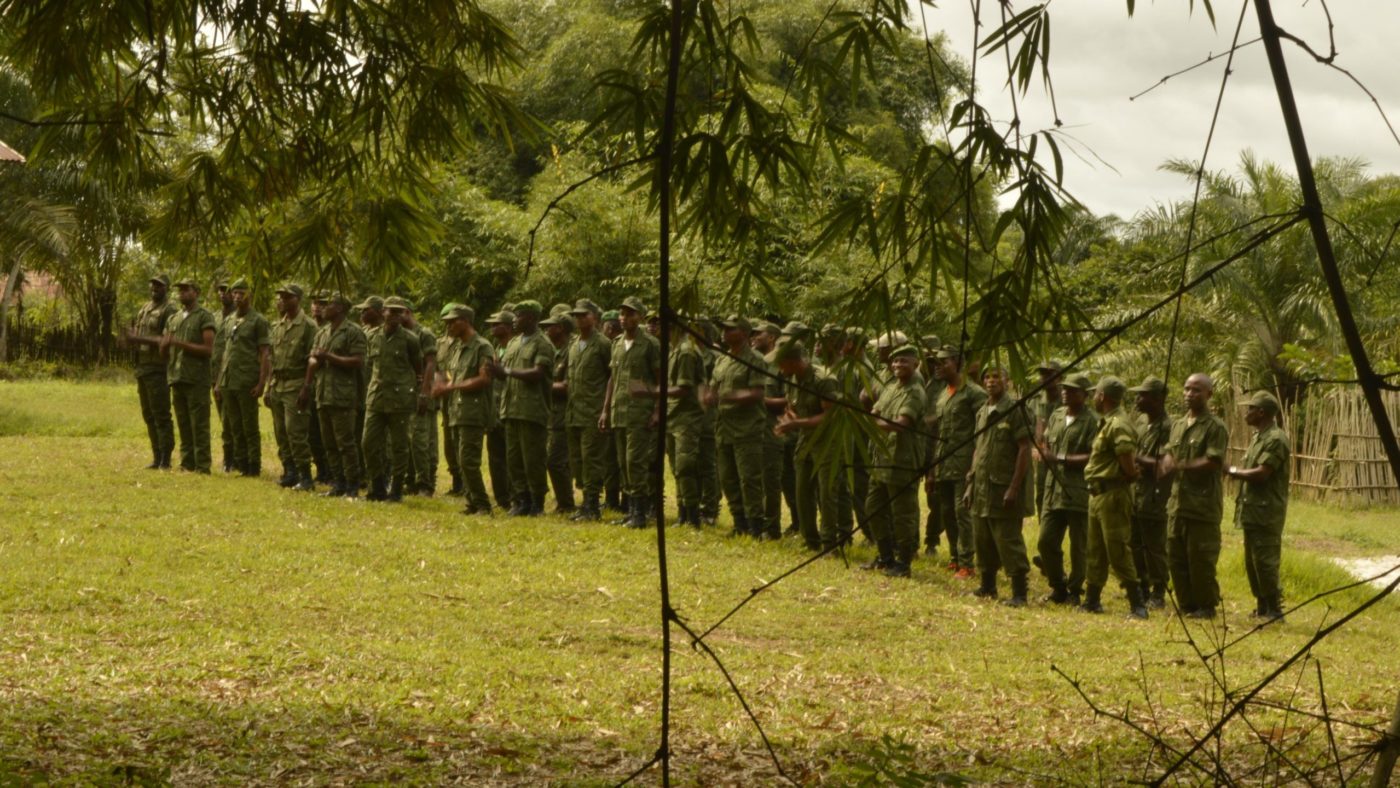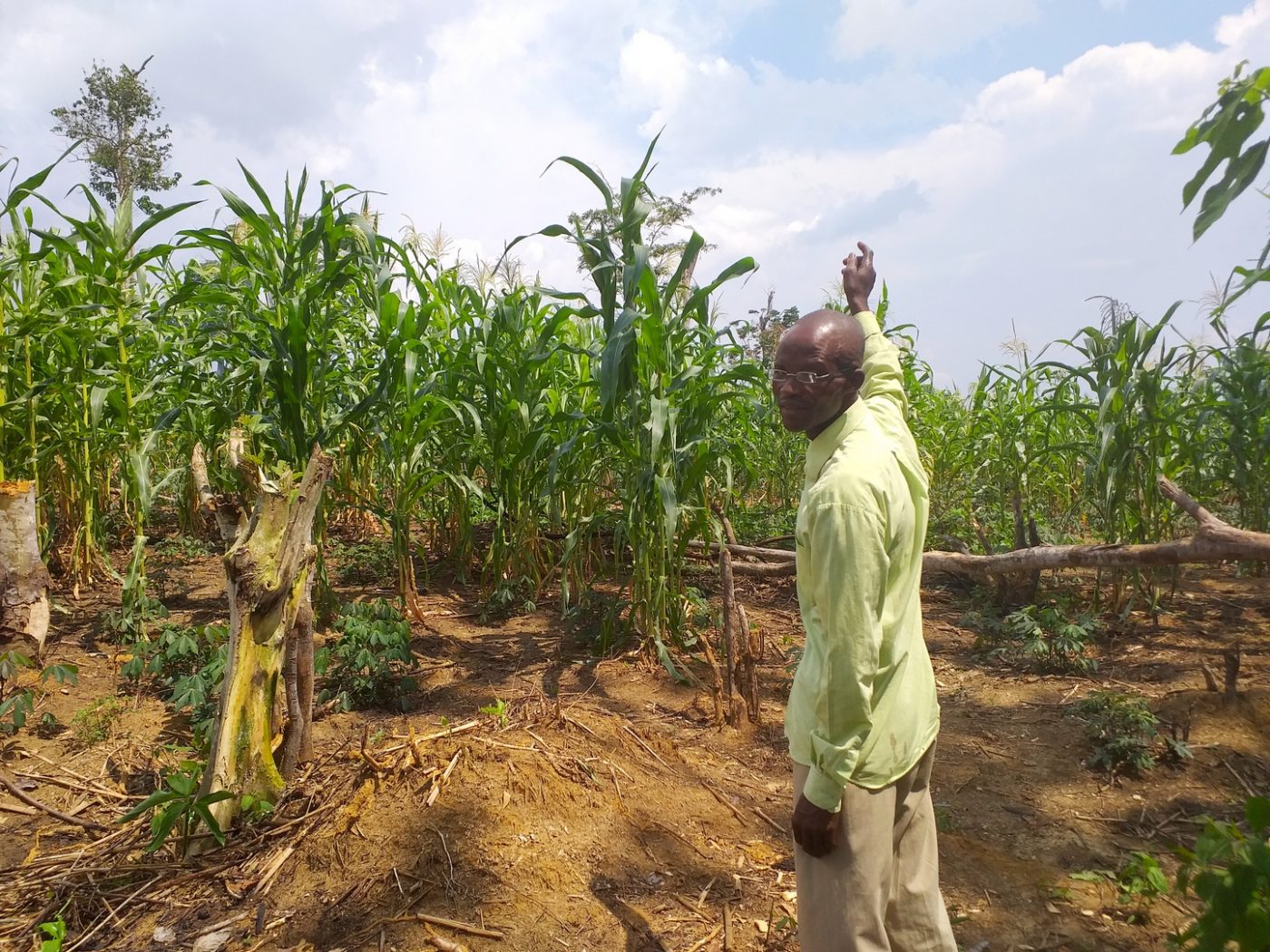Seized bushmeat
In November 2021, 11 large baskets of bushmeat were seized by the Salonga National Park’s (SNP) mobile unit in the Monkoto territory of the Tshuapa province.
What was shocking to the park staff was the number of animals killed by the poachers and especially the fact that this time the poachers had also killed a bonobo, a great ape classified as endangered on the IUCN red list and therefore strictly protected.
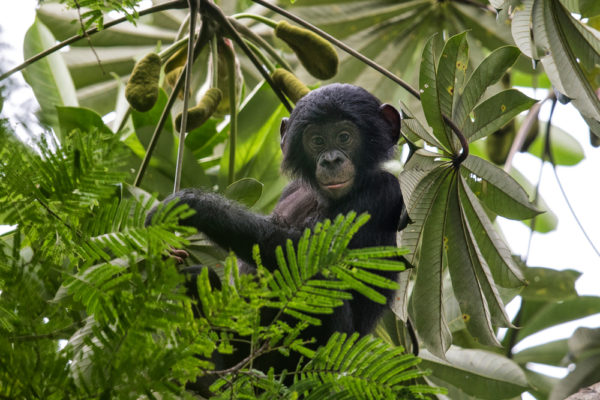
A young bonobo sitting on a tree and curiously observing the photographer.
The video shows 11 baskets of bushmeat seized in Salonga. It is clearly visible that also a bonobo has been killed by the poachers.
Poverty endangers species
The feelings of the park management unit (UGPNS) are therefore divided between pride in the mobile unit’s good work in preventing poachers from killing more animals and concern about the fact that these poachers came from more than 250 km away, travelling 8 to 10 days to hunt in the Tshuapa part of the SNP.
“The poachers are from Sankuru. They come from Sankuru and enter the park through the Monkoto Territory to poach,” said Lucien Gedeon Lokumu, deputy director of SNP.
The sad conclusion could be that in Sankuru there are no more animals to hunt. But this is only a speculation.
“We know that poaching is especially a problem in the southeastern and southwestern part of SNP, in the provinces of Sankuru and Mai-Ndombe. Unfortunately, it is almost impossible to really control the whole park with the logistical and financial means and the number of ecoguards available. We are doing our best, not only with patrols but also by providing the local population with other perspectives to develop their livelihoods. Basically, poverty and the lack of alternatives are the reasons why people turn to poaching, which is fueled by the constant high demand for bushmeat from the big urban centers,” Pierre Kafando, director of the SNP, explains.
Indeed, the majority of the local population is very poor and depends on natural resources for their daily survival. Hunting and fishing as well as subsistence agriculture are the primary activities allowing them to earn their living.
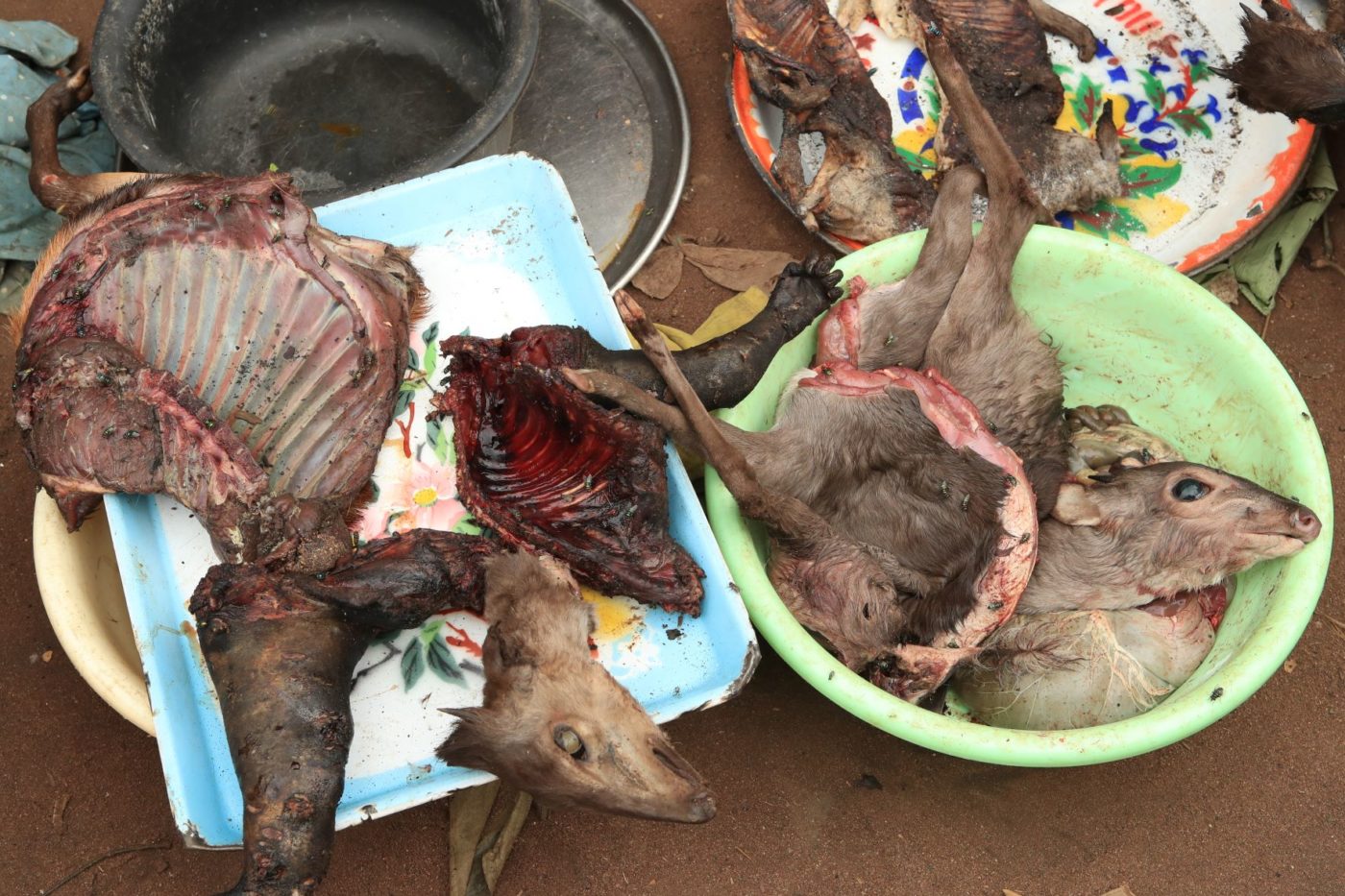
Bushmeat for sale on a local market.
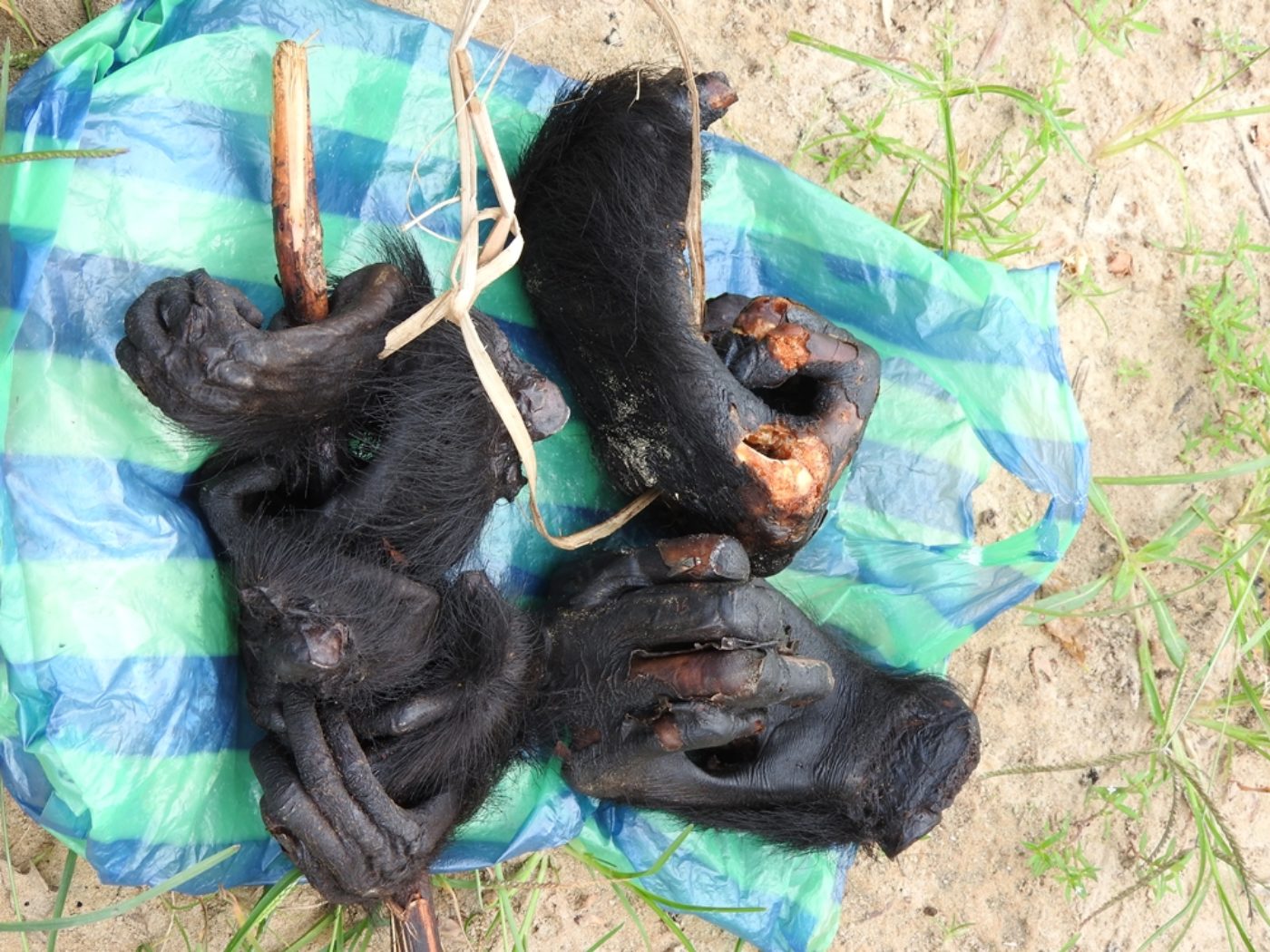
Hands of bonobos, seized in Salonga Nantional Park.
Hunting in the DRC
In the DRC, hunting outside of protected areas is generally allowed as long as certain rules are followed to ensure that the harvest and reproduction of animals are in balance. For example, some animals – such as the bonobo, the forest elephant or the giant pangolin – are prohibited from being hunted anywhere because of their low populations; other animals, such as duikers, antelopes, suidae, small monkeys and to a lesser extent small carnivores, may be hunted for food and trade. But in any case, hunting of any animal is strictly prohibited in SNP as in all other national parks in DRC. This rule is very important to ensure that animal populations can regenerate despite human population growth and an increased demand for bushmeat and trophies. This ultimately means the hunting ban helps ensure that there are enough animals to hunt outside the park as well.
Unfortunately, the poachers mentioned here did neither respect the DRC conservation law nor the customary rules of the region, as the bonobo occupies a special place in certain communities where taboos on its hunting and consumption of its meat are part of local traditions.
“I believe that for these poachers the law will do its job,” concludes Lucien Gedeon Lokumu, because the poachers – in strict respect of human rights – have been handed over to the justice system where they are awaiting trial.
For several years, the UGPNS has been involved in awareness raising and explaining the rights and obligations of the conservation law to the Park’s residents. The goal is to strengthen the understanding of the riparian communities that only a sustainable use in accordance with the law will protect natural resources for future generations.
Ideally, the work of the ecoguards will one day be superfluous, but until then, they will help protect the park’s biodiversity.
